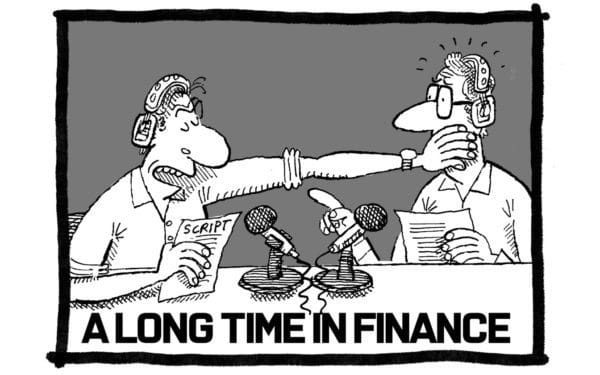A personal view from Ian Stewart, Deloitte’s Chief Economist in the UK. Subscribe to & view previous editions at: http://blogs.deloitte.co.uk/
Last December the US Congress passed a bill overhauling the tax code, the first major tax reform since 1986. The federal corporate tax rate was permanently slashed from 35%, the highest rate of any large, developed country, to 21%. The tax cut is partly financed by a one-off levy on profits retained overseas by US corporations, at 15.5% on cash and 8% on other investments. Payment of this levy is spread over eight years and applies whether or not cash is repatriated back to the US. The bill also lowered the income tax burden for most American workers.
The tax reforms target the enormous cash piles that US corporates have kept overseas to avoid paying higher US taxes. Ratings agency Moody’s estimates that US non-financial companies hold about $1.4tn in offshore cash and liquid investments, constituting 72% of their total cash holdings at the end of 2017. Much of this is concentrated in the hands of a small number of firms. Under the reforms technology firms are likely to bear significant tax charges, with Apple, Microsoft, Google’s parent Alphabet, Cisco Systems and Oracle being the top five overseas holders of cash.
Supporters of the reform hope that the tax on overseas cash will lead corporates to repatriate huge amounts of money to the US, causing a surge in capital expenditure and job creation. Previous experience point to a more muted response.
In 2004, the Bush administration implemented a one-off tax holiday, allowing corporates to repatriate overseas earnings on which they paid just a 5% tax. A 2011 US Senate study concluded that the policy was ineffective. Corporations brought back $312bn held overseas but there was no corresponding boost in domestic investment or R&D spending. The top 15 beneficiaries of the holiday reduced their total US employment over the next few years. Instead stock repurchases and executive compensation increased. The main beneficiaries were pharmaceutical and technology companies, a relatively narrow section of US multinationals.
This time round it looks likely to be a similar story. When asked in a recent Bank of Merrill Lynch survey about how they would use repatriated cash major US multinationals identified paying down debt, repurchasing shares and undertaking M&A as the top three priorities; increasing capital spending was in fourth place and raising dividends in fifth. Of course some of that increased dividend income will flow to the real economy, but more indirectly, to different sectors and with different effects, than an increase in corporate investment.
A bigger boost to activity seems likely to come more from the reduction in the rate of corporate tax and an immediate write-off against tax for capital expenditure incurred before 2022. Unlike the taxation of overseas cash, which effect a relatively small number of generally large businesses, cutting the rate of corporation tax benefits the whole corporate sector. Some businesses, including Walmart, AT&T and Bank of America have announced wage rises or bonuses in response to the tax cuts.
The new corporate tax rate will put the US well below the weighted average for G7 and G20 countries and could encourage multinationals to increase levels of investment in the US.
The third aspect to the tax reform, which has perhaps received less attention, is the lowering of income tax. A study by the Tax Policy Centre shows that 80% of US taxpayers would receive a tax cut in 2018 – averaging about $2,100. Higher income earners are the biggest beneficiaries, although the study shows that every quintile of wage earners will see a boost to incomes this year with the lowest being a 0.8% raise for those in the bottom quintile.
Assessments of the macroeconomic impact of the tax cuts vary. But the general expectation is for a probably small boost to GDP growth and a sharply increased federal budget deficit. The tax cutting package runs two risks.
The first is that tax cuts could over-stimulate a healthy economy which is already showing signs of inflationary pressures. The head of Goldman Sachs, Lloyd Blankfein, made exactly this point last week. The US unemployment rate stands at just 4.1% and the economy is showing good growth. The Federal Reserve is well into the tightening phase of the monetary cycle. It has raised interest rates by 125bp from their post-crisis lows and has signalled at least a further 75bp in rate rises for this year. If tax cuts seem to be fuelling inflation the Fed could speed up the pace of tightening.
The second risk relates to the government borrowing. The Congressional Budget Office, the official deficit watchdog, estimates that the US government will need to borrow a further $1.5 trillion over ten years to fund the tax cuts.
The US seems to be heading into some of its largest budget deficits outside of war time and recessions. The Bipartisan Policy Centre, an independent think tank, estimates that following a recent Congressional agreement to avert a shutdown, the US deficit could more than double to 5.7% of GDP in 2019. This is a very large deficit to be running so late in the economic cycle. It would leave the US with the largest budget deficit, as a share of GDP, of the G7 group of major industrialised nations. Borrowing on this scale reduces the headroom for policymakers to use debt-financed public spending to counter the effects of a future downturn.
A combination of rising interest rates and a widening US budget deficit could push yields on US government bonds higher. Earlier this month jitters about inflation and rising bond yields triggered stock market gyrations. America is adding a major fiscal stimulus to an expansion that is mature and when inflationary pressures seem to be building. The short-term boost to growth could well bring with it higher levels of volatility.



